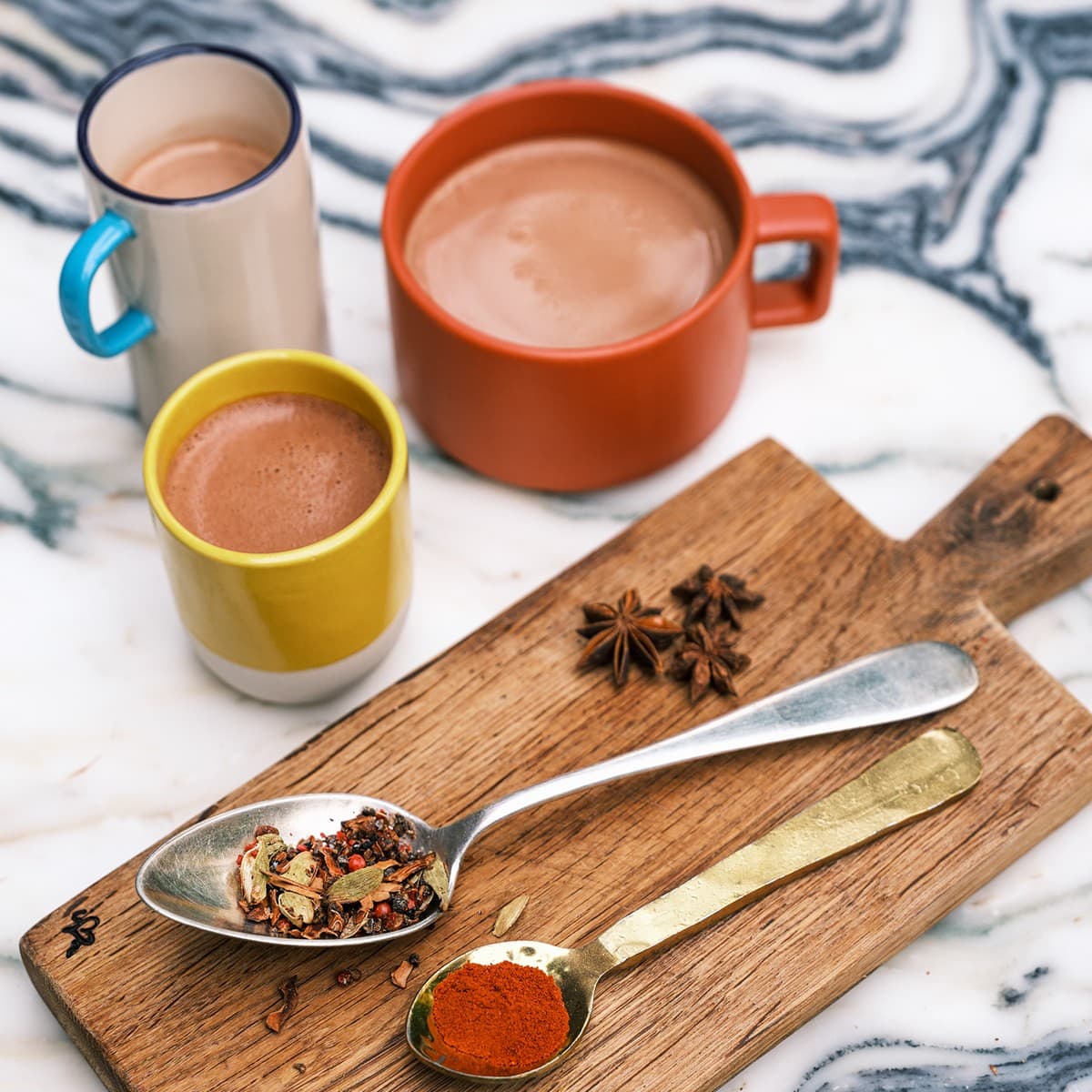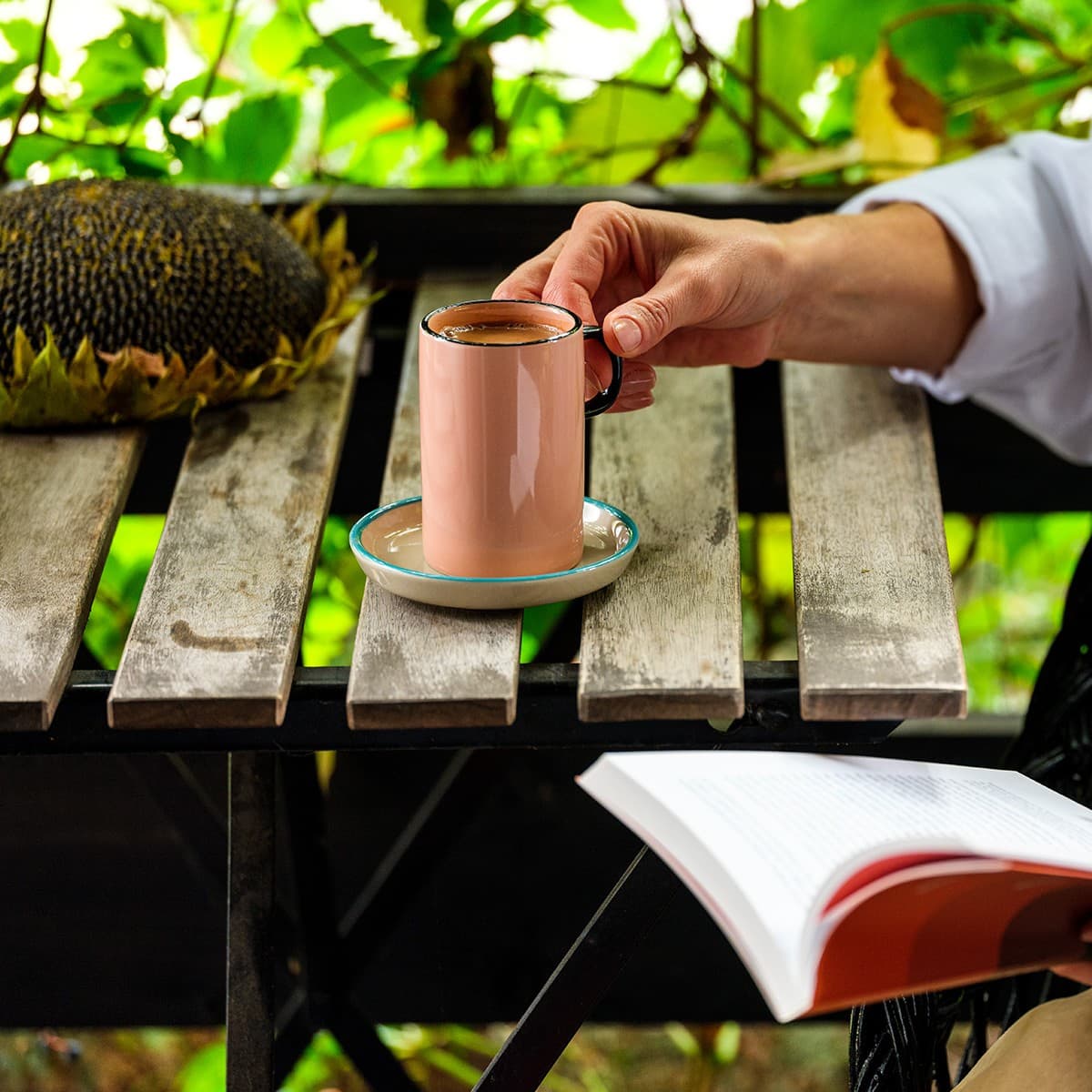Ecuador Manabí Ceremonial Cacao - 100% Cacao Paste.
Ceremonial cacao (whole cacao paste, cacao mass) from Ecuador Manabi is a product that is characterised by a milky-chocolate flavour with subtle tropical fruit notes. It is mildly sour and very refreshing in flavour, and dense and silky in its texture. It is produced from Trinitario (70%) and Forastero (30%) grains.
This cacao comes from the province of Manabi, located on the Pacific Ocean in central Ecuador, which is renowned for its excellent climatic conditions for growing cacao.
In stock
Fast shipping
Order before 11 a.m. and we will ship it the same day.
Free shipping to Poland for orders starting from 350,00 zł
Product Details
| Flavour | Semi-sweet |
|---|---|
| Cacao Species | Forastero, Trinitario |
| Brand | |
| Composition | 100% Cacao Paste (ground cacao beans) |
| Allergens | This cacao contains no allergens. |
Nutritional data
Per 100 g| Nutritional value | 579.6 kcal |
|---|---|
| Protein | 12.5 g |
| Carbohydrates | 7.4 g |
| Sugar | 1 g |
| Fat | 52 g |
Products from category Cacao, Ceremonial cacao
View allCacao from Ecuador, especially from the province of Manabi, is world-renowned for its high quality. Manabi province has cacao plantations along the coast and in mountainous areas. The climate, soil and terrain are favourable for the growth of cacao with an intense flavour and aroma.
Cacao from Manabi province belongs to the Nacional species, which is one of the oldest and rarest cacao species in the world. It is characterized by a bitter taste, a floral aroma, and a nutty aftertaste. Cacao fruit from this province is also smaller than those from other regions and has an intense red or purple colour.
Due to its unique flavour and aroma, cacao from Manabi province is often used to produce high-quality chocolate, as well as for other products such as cocoa powder and cacao mass.
Cacao from Ecuador, including Manabi province, is also increasingly popular with consumers interested in sustainable agriculture and ethical food production. Many cacao plantations in Ecuador are certified by organisations such as the Rainforest Alliance and Fairtrade International, which ensure that cacao is produced with respect for the environment and human rights.
What is cacao paste?
It is the dried, shelled, and then ground cacao beans, which take the form of a hard but brittle block or lumps.
Properties of cacao
Ceremonial cacao is a special form of cacao used in ceremonies by the indigenous cultures of Mexico, and Central and South America. It contains theobromine, caffeine, anandamide, phenylethylamine and flavonoids that affect the body and mind, improving mood and concentration, relieving symptoms of depression and stress, reducing pain and inflammation, and strengthening the immune and cardiovascular systems. The consumption of ceremonial cacao is also considered a spiritual experience that helps develop inner wisdom, intuition and spiritual sensitivity and is often used in shamanic practices and meditation.
You can read more about the properties of cacao here.
How to prepare cacao?
Mix between 10-20 grams of crushed cocoa with water, vegetable or animal milk (200 ml) and spices such as chilli, vanilla, cinnamon or cardamom. If desired, sweeten with honey or other healthy sugar. it is worth adding spices and honey at the end of the process.
You can find all the recipes for ceremonial cacao here.
What can be made from cacao paste?
Cacao paste is a very versatile culinary ingredient that can be used to prepare many different dishes and desserts at home. Here are some ideas of what can be made from cacao paste:
- Hot chocolate: Cacao paste is the ideal ingredient for making hot chocolate. Just dissolve the paste in milk or water, add sugar and season with your favourite spices, such as cinnamon or vanilla.
- Desserts: cacao paste is an ideal ingredient for preparing desserts such as brownies, chocolate cakes, truffles or milk chocolate. Just add the paste to a cake or cream to add an intense cacao flavour.
- Beverages: cacao paste can also be used to prepare various beverages, such as smoothies, shakes and shakes. Just add the paste to a blender with milk, banana or other fruits and season with your favourite spices.
- Sauces: cacao paste is an ideal ingredient for making sauces for meats, vegetables or salads. Just add the paste to the sauce and mix it with other ingredients to add an intense cacao flavour.
- Chocolate flakes: Cacao paste can also be used to make homemade chocolate flakes. Just dissolve the paste with milk, add sugar and mix with oatmeal, then dry in the oven.
Remember that cacao paste is very intense in flavour, so it should be added in moderation to dishes.
Daily dose of cacao
About 10-20 grams. Occasionally, you can increase to 50 grams.
Classification of ceremonial cacao
Any natural cacao in the form of a paste, beans, nibs (crushed cocoa beans) or powder is bitter, nevertheless, we can divide them into less bitter or dry.
Our cacao flavor scale is:
- Sweet
- Semi-sweet
- Slightly dry
- Semi-dry
- Dry
- Bitter
Allergen information: it contains no allergens










